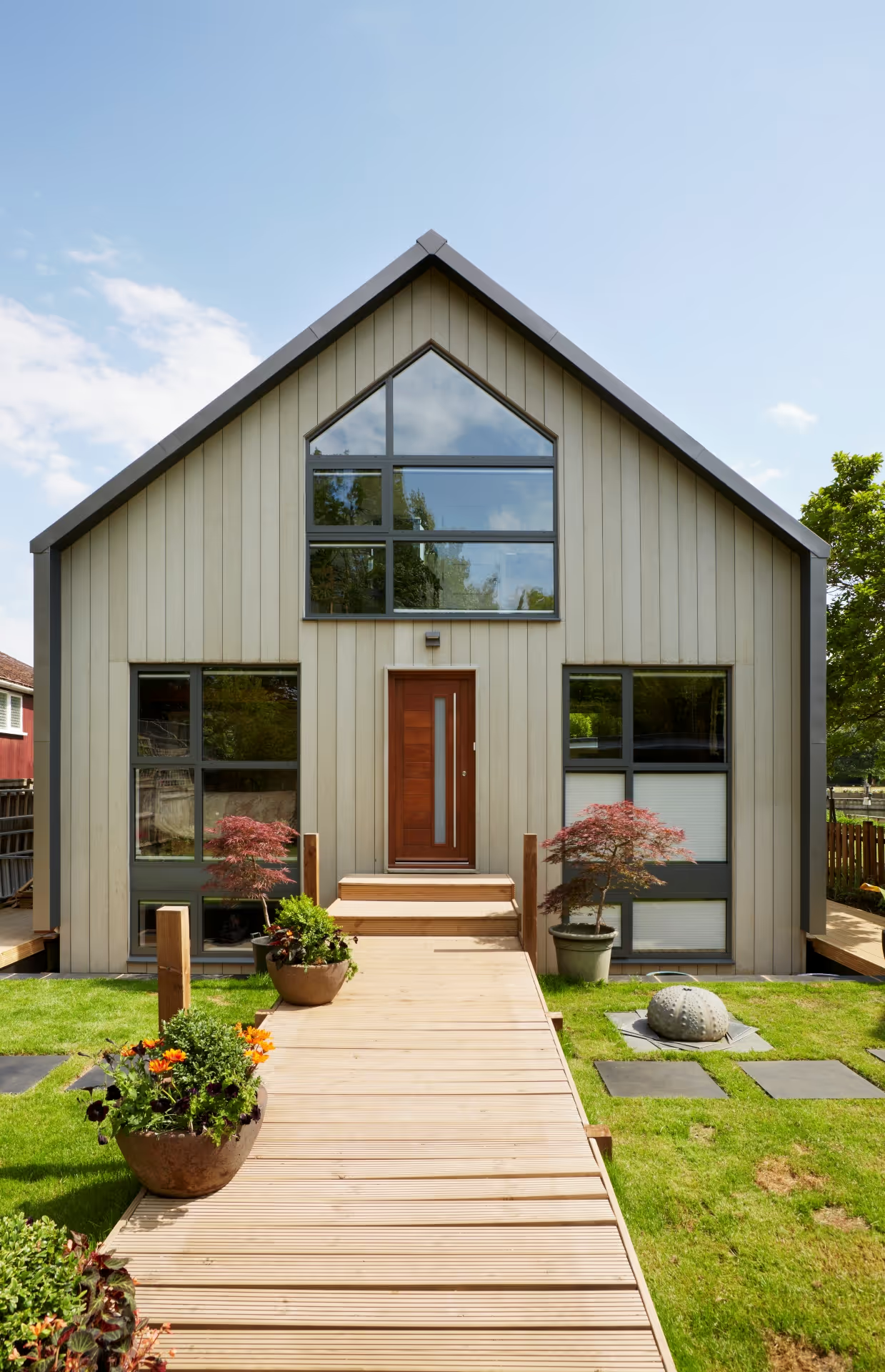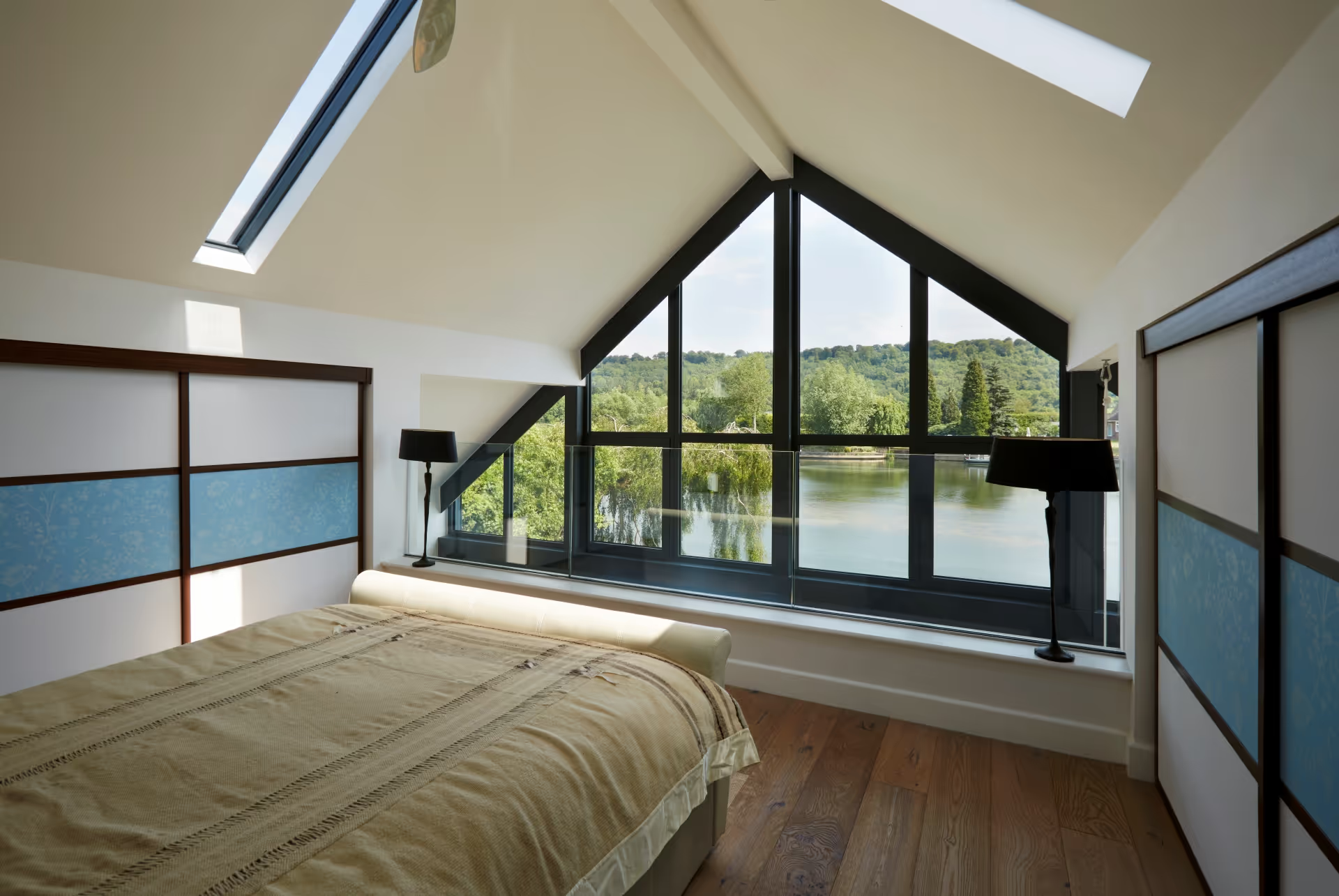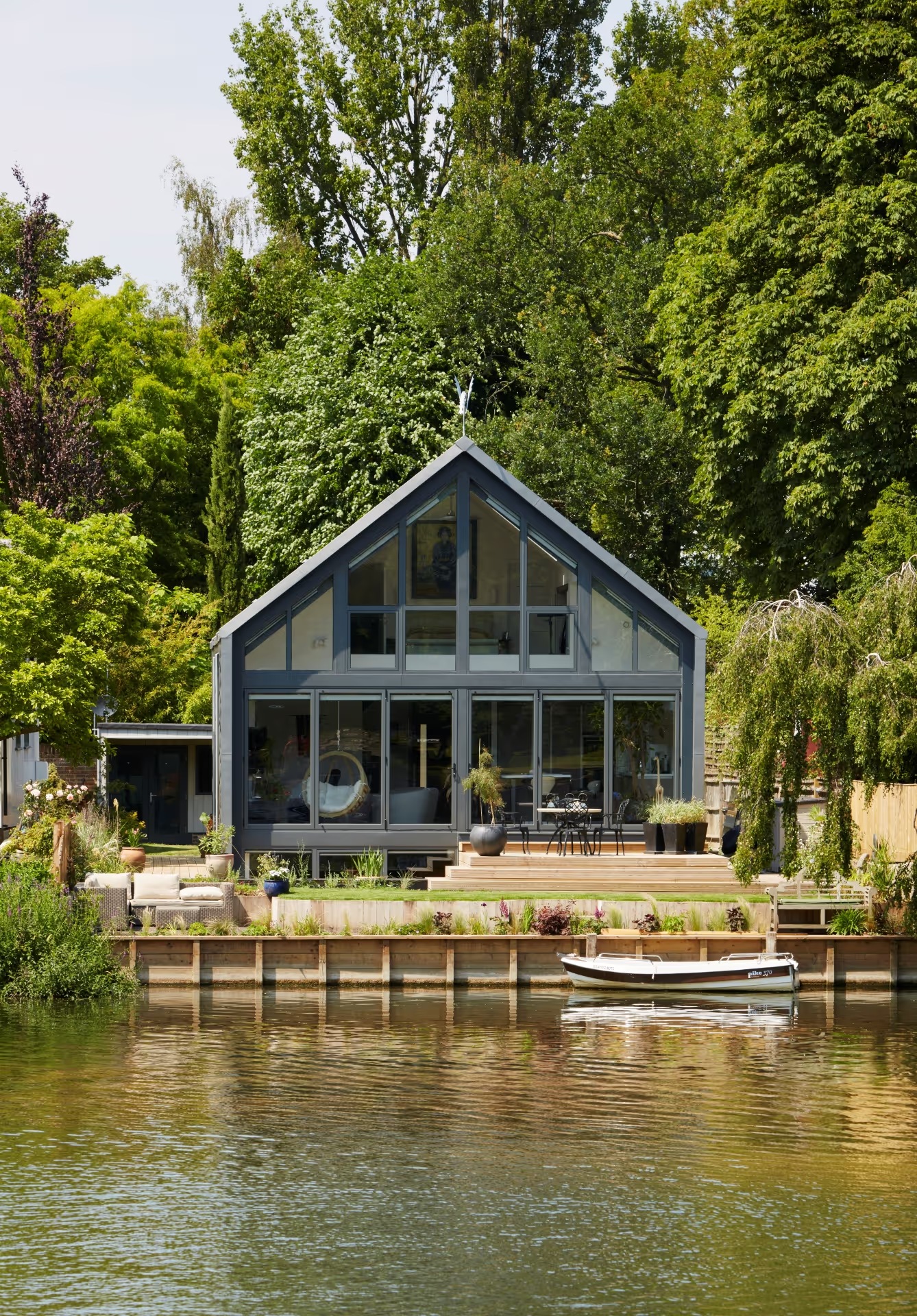

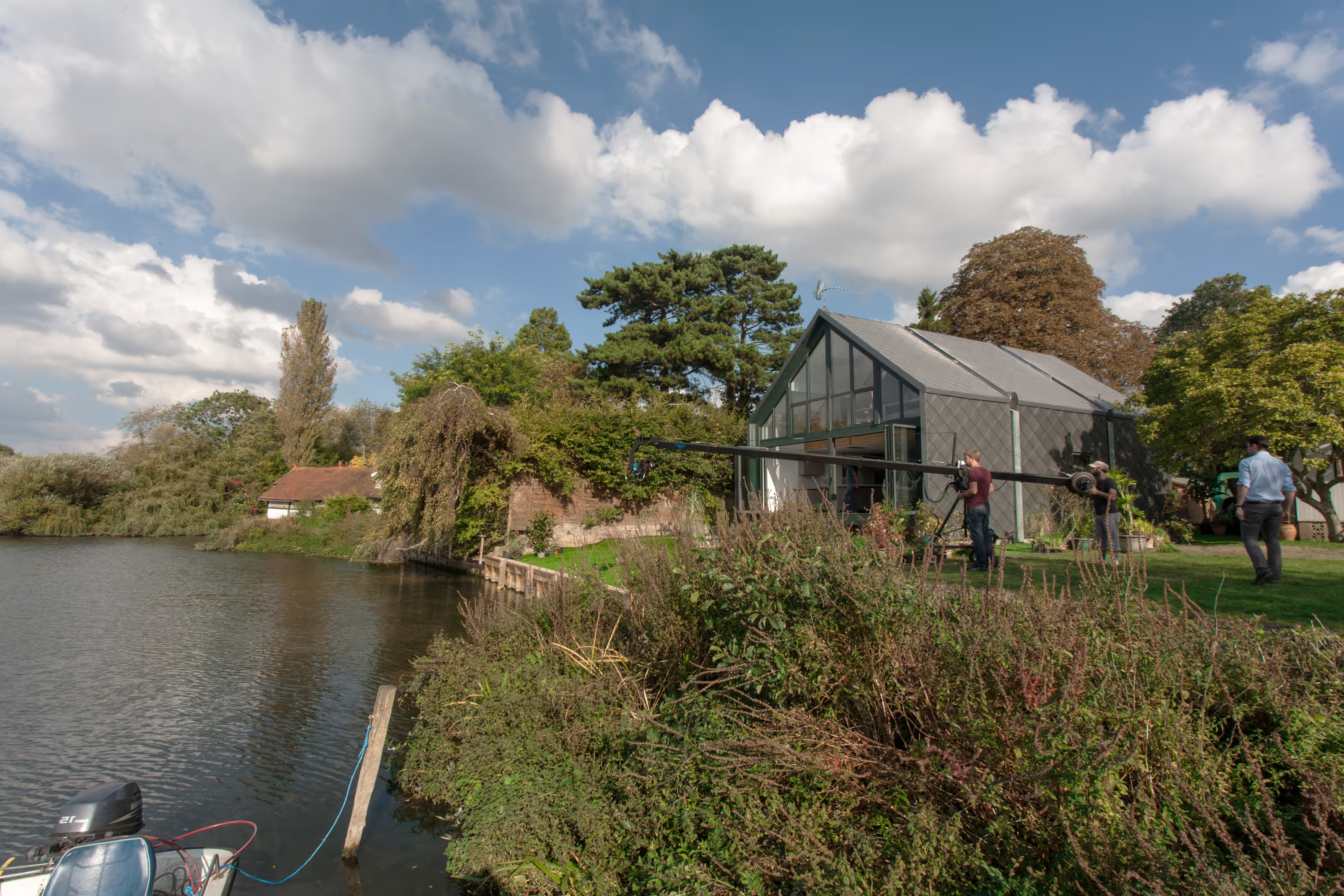
Location: Buckinghamshire, UK
Scale: 3-bedroom house, 225sqm
Constraints: Flood zone 3, conservation area, no UK planning precedent
Photography Credits: Darren Chung & Tim Crocker
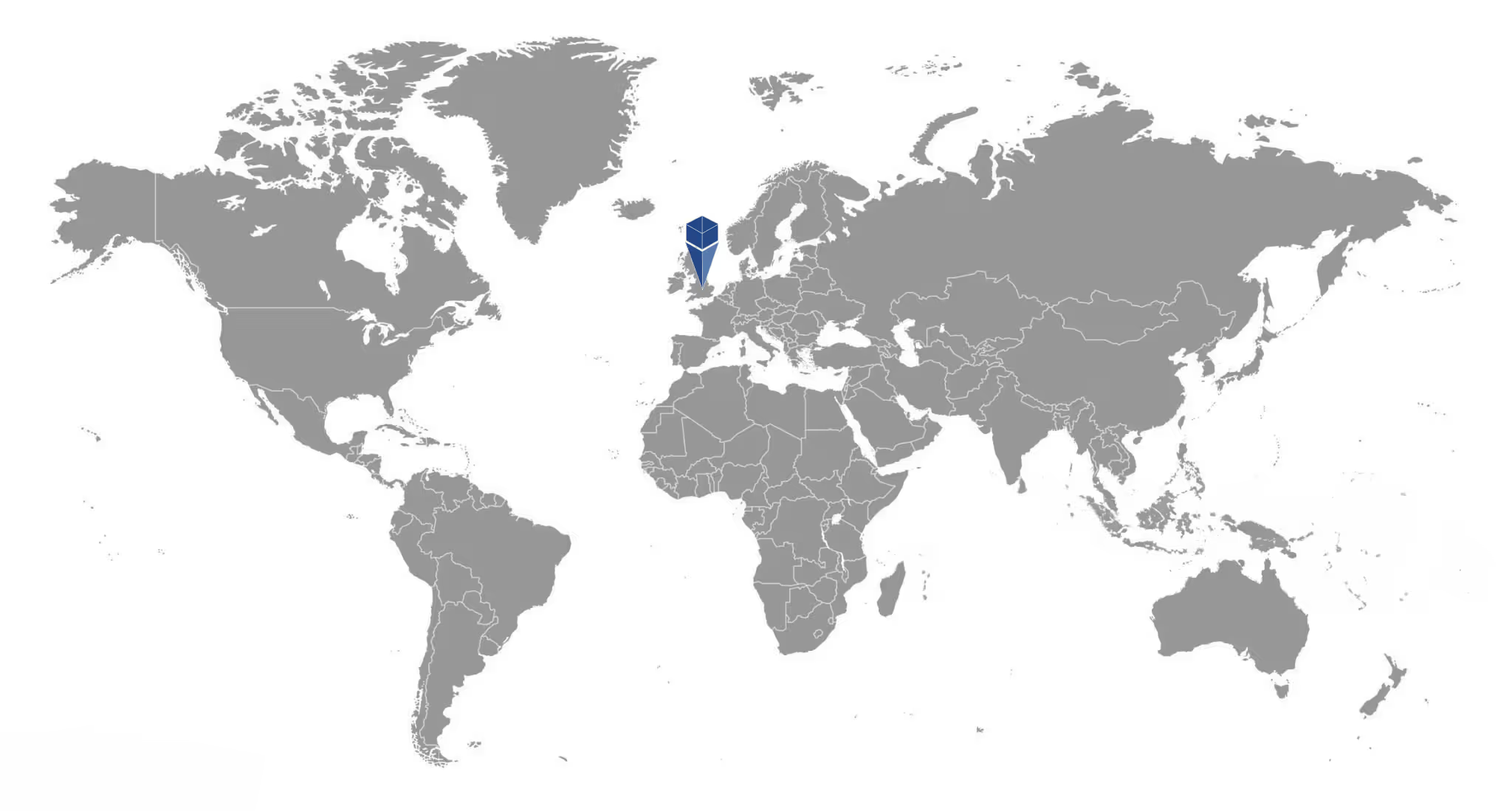



.Featured on Channel 4’s Grand Designs, the UK’s first Amphibious House is located on a small island in the River Thames in south Buckinghamshire.
Historically, the 15 houses on the island were raised about 1 m above ground on timber piles, safeguarding them only from regular flooding.
When our clients proposed rebuilding, they discovered that predicted extreme floods required their new home to be elevated by a further 1.4 m, which would have resulted in ground floor elevations of 2.5 m and a compromised ridge height under Conservation and Environment Agency constraints.
By re-imagining living with water through amphibious architecture rather than avoiding it, we can unlock safer, more sustainable homes in flood-prone locations without compromising design or heritage.


The solution was the amphibious house: a building that rests on the ground when conditions are dry, but rises in its dock and floats during a flood event.
The ground floor elevation is raised by less than 1 m rather than almost 2 m, enabling a three-storey 225 m² three-bedroom dwelling over three floors, replacing a former single-storey 90 m² house without significantly increasing ridge height.
The site sits in the middle Thames catchment, where the river is wide and navigable and requires large rainfall to flood.
We incorporated adaptive landscaping: a terraced garden that forms an ‘intuitive landscape’ of flood-warning terraces planted with reeds, shrubs and lawn, enabling occupants to gauge rising water levels naturally.
Utilities are connected via ‘elephant-cabling’ flexible service pipes designed to extend up to 3 m, allowing continuity of services after flood events, maximising daily life continuity.

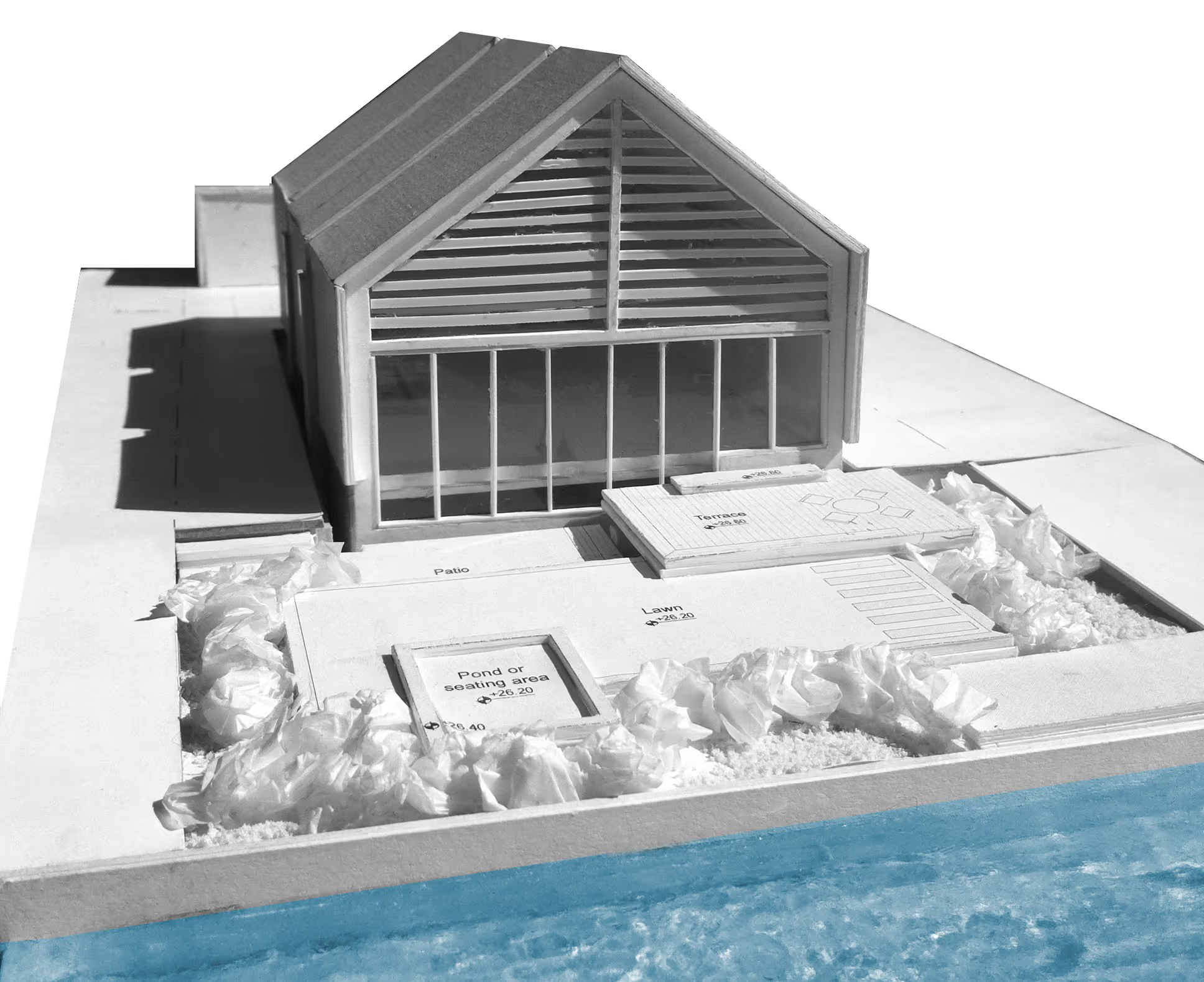
This award-winning floating home shows that resilience and beauty can coexist. Its three-storey, 225 m² layout sits gracefully within its setting, marrying sustainable architecture with everyday comfort.
During the severe winter floods of 2019–2020, the Grand Designs floating house rose and fell exactly as intended, a quiet triumph of design over disaster.
The project has since inspired new thinking in flood-resilient and floating architecture across the UK, proving that homes on water can be every bit as grounded in design as those on land.


.avif)
We envision large, flood-resilient communities that are designed to thrive in a changing climate. These sustainable developments will combine low-carbon homes with multifunctional landscapes that naturally manage surface water and provide flexible flood storage when needed. Streets of flood-proof houses will sit on higher ground, while amphibious homes and floating architecture will form adaptable edges between land and water.
Our long-term goal is to design climate-adaptive communities that maintain normal life through both droughts and floods. Through ongoing research and award-winning projects, BACA architects are proving that this vision for sustainable architecture in the UK is already becoming a reality.

